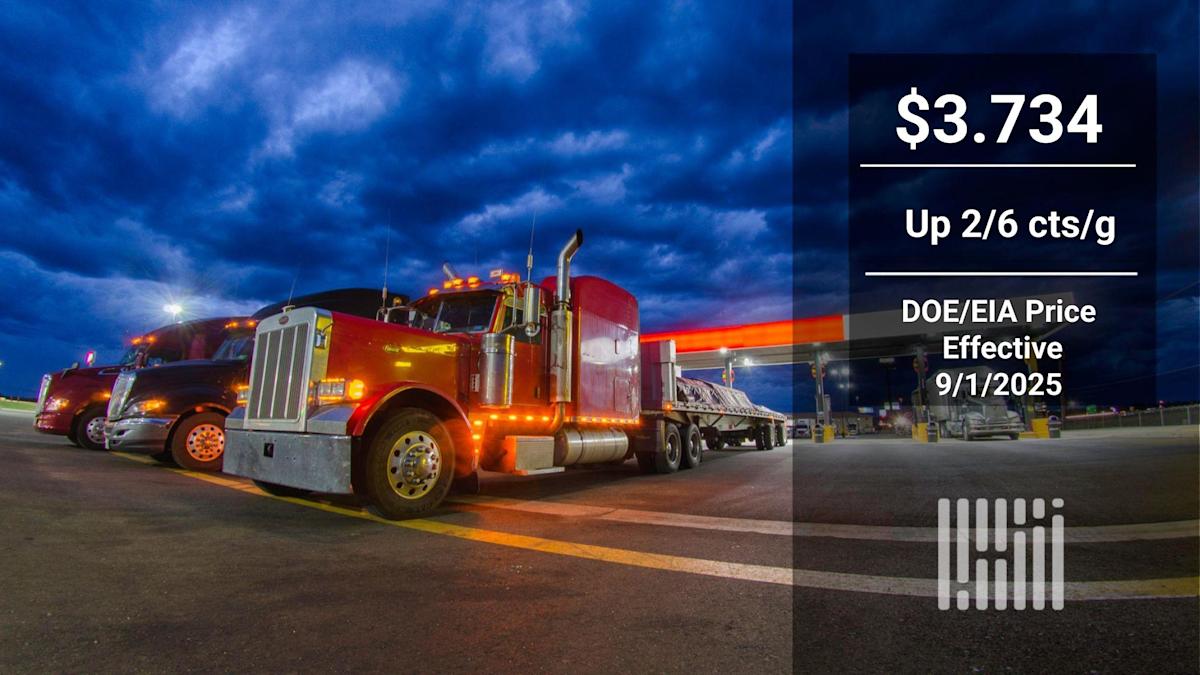For the first time in six weeks, the benchmark diesel price used as the basis for most fuel surcharges has moved higher.
The weekly Department of Energy/Energy Information Administration average weekly retail diesel price rose 2.6 cents/gallon to $3.734/g, effective Monday but published Wednesday. It’s the first increase since a 5.4 cts/g increase July 21.
Since a big jump of 20.4 cts/g on June 23, 2025, which followed the tit-for-tat air attacks by Israel and Iran, the DOE/EIA retail diesel price has been published in a narrow range.
Its high price during the 10 weeks that followed the June 23 price was $3.812/g on July 21; its low was last week, at $3.708/g.
Oil markets have not reacted strongly to macroeconomic developments or news events in petroleum markets themselves, even as markets as diverse as equities and precious metals have been volatile.
But oil futures markets have been largely stable. For example, Brent, the world’s crude benchmark, did not settle above $70/barrel on any single day in August. It settled below $66/b twice; it settled above $69/b only on August 1, the first trading day of the month.
Brent opened September by rising to a settlement at $69.14/b, with the latest rise in tensions between Ukraine and Russia cited as the reason.
But markets then reversed Wednesday, driven by news that the OPEC+ meeting this weekend is expected to authorize putting more oil on to the market. This is not much of a surprise–the group has been doing that monthly–but it helped reverse the gains of Tuesday in oil prices. At approximately 11:35 AM EDT, Brent was down $1.64/b to $67.50/b.
One area that might be the focus of diesel consumers in coming weeks and months is California, where the state is expected to lose another refinery soon.
Phillips 66 (NYSE: PSX) has said it plans to shutter its refinery complex in the Los Angeles area–specifically in Carson and Wilmington–by the end of the year. However, Reuters reported that the shutdown operations are going to begin soon.
California gasoline and diesel prices have long been higher than the rest of the country, due to a mix of factors: higher taxes, carbon taxes, specialized blends and other regulatory issues.
The spread between the national DOE/EIA diesel price and the California price in the Monday release was $1.18/g, with the DOE/EIA price that much less than the California price.
That was the highest spread since June 16. But it is well below the highest spread this year, which came in at $1.321/g on May 26.
California’s diesel price differential over the national figure this week is more than it was a year ago, when it was $1.124/g, but less than two years ago, when the spread was $1.309/g. But three years ago, it was just $1.09/g.
